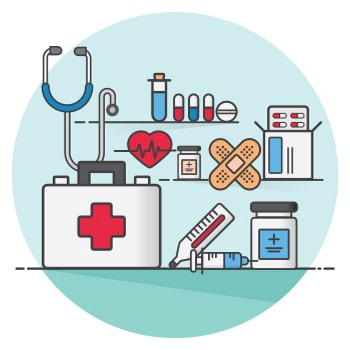
The doctor will take a mother's blood sample and analyze it for DNA fragments. These are DNA pieces that are between 25-30 base pairs long and correspond to a specific chromosome. The researchers counted the number and types of gene fragments on each chromosome. Those women who had Down syndrome had more DNA fragments from chromosome 21 than women who did not have the condition.
Screening tests are used to estimate the chances of Down syndrome.
Screening tests help to determine the possibility of a baby with Down syndrome. One in 1,000 children will develop Down syndrome. This is one in every 1,000 chances. This is the National Screening Committee's cutoff point for identifying a woman at risk of having a Down syndrome baby.

These screening tests could include a blood test which measures fluid levels, gender, age and smoking status. These results will then be used by a computer program to determine if a baby is at risk for Down syndrome. Although some screening tests are precise, they can still give abnormal results. Before undergoing any medical procedure, it is important to be aware of the potential risks.
Down syndrome is diagnosed by diagnostic tests.
There are several diagnostic tests for Down syndrome. These tests have higher false-positive rates than other tests that are performed later in the pregnancy. An amniocentesis is a procedure that takes a sample of amniotic fluid from a pregnant woman to check for Down syndrome. The quadruple marker screening, which can detect brain and spinal cord defects as well as neural tube defects, is another test. These tests can be performed between fifteen and twenty weeks into pregnancy. If you are high-risk for birth defects, your doctor may request a sample of your umbilical fluid to count your chromosomes.
Ultrasound screening is another way to detect Down syndrome in the womb. This requires the woman to place a special gel onto her abdomen. Also, a small blood sample is taken. The ultrasound transducer will then send sound waves through the fluid. They deflect off the structures in the uterus. These structures are dense and determine the speed at which sound waves bounce back. The computer will then analyze this information and convert it into an image for the fetus.
Screening tests may be considered invasive.
Screening for Down syndrome requires extensive procedures. This is true, regardless of whether they are correlated with the risk of miscarriage. A new study has shown that the current invasive tests have no advantage over theoretical NIPD exams. Surprisingly though, half of all women surveyed refused to have these tests. And one-third said they would not go through such a test. Some women may opt for these tests if it is not possible to miscarry.

While the screening test to detect DS has seen significant improvements since the 1980s, more improvements are required. Today, only 5% to 80% of pregnant women undergo invasive testing. Unfortunately, these tests are associated with significant risks and a high rate of false-positives. In 2008, 400 miscarriages resulted from screening for DS.
FAQ
What are the main functions of a health care system?
The health care system should provide adequate medical facilities for people who need them at a reasonable cost while ensuring access to quality services by all.
This includes providing preventive healthcare, promoting healthy lifestyles, as well as appropriate treatment. It also includes equitable distributions of health resources.
What are the differences between these three types of healthcare system?
The first system is a more traditional system that gives patients little choice about who they see for treatment. They visit hospital A if they are in need of an operation. But otherwise, it is best to not bother as there is little else.
The second is a fee for service system in which doctors make money according to how many tests, procedures, and drugs they do. You'll pay twice the amount if you don't pay enough.
The third system is a capitation system which pays doctors according to what they actually spend on care rather than by how many procedures they perform. This encourages doctors to use less expensive treatments such as talking therapies instead of surgery.
What is my role within public health?
Participating in preventive efforts can help to protect your own health and that of others. You can also contribute to improving public health by reporting any injuries or illnesses to healthcare professionals to help them prevent future ones.
What is the value of the health care system
A country's economy is only as strong as its health care system. It helps people live longer, healthier lives. It creates jobs for nurses, doctors, and other medical professionals.
The health care system ensures that everyone can access quality healthcare services regardless of their income.
Understanding how the healthcare system works is crucial if you want to pursue a career in medicine, nursing, or any other medical profession.
What are the various types of insurance for health?
There are three main types of health insurance:
-
Private health insurance covers most costs associated with your medical care. You pay monthly premiums for this type of insurance, which is usually purchased directly from private firms.
-
Although most medical costs are covered by public insurance, there are certain restrictions. Public insurance does not cover preventive services, routine visits to doctors, hospitals and labs, Xray equipment, dental offices, prescription drugs or certain tests.
-
Medical savings accounts (MSA) are used to save money for future medical expenses. The funds are saved in a separate account. Many employers offer MSA programmes. These accounts do not have to be taxed and can earn interest at the same rate as bank savings.
What are the services of health care?
Patients must know that they have easy access to quality healthcare. We are here to help, no matter if you need an emergency appointment or a routine visit.
We offer many different types of appointments, including walk-in clinics, same-day surgery, emergency department visits, and outpatient procedures. If you live far away from our clinic, we can also provide home health care visits. We can also arrange for home care visits if you do not feel at ease in our office.
Our team includes dentists and doctors as well pharmacists and nurses. Each visit should be as easy and painless as possible.
Statistics
- The healthcare sector is one of the largest and most complex in the U.S. economy, accounting for 18% of gross domestic product (GDP) in 2020.1 (investopedia.com)
- Over the first twenty-five years of this transformation, government contributions to healthcare expenditures have dropped from 36% to 15%, with the burden of managing this decrease falling largely on patients. (en.wikipedia.org)
- For instance, Chinese hospital charges tend toward 50% for drugs, another major percentage for equipment, and a small percentage for healthcare professional fees. (en.wikipedia.org)
- For the most part, that's true—over 80 percent of patients are over the age of 65. (rasmussen.edu)
- Price Increases, Aging Push Sector To 20 Percent Of Economy". (en.wikipedia.org)
External Links
How To
What are the key segments in the Healthcare Industry?
The healthcare industry includes the following key segments: diagnostics/biotechnology, pharmaceuticals/diagnostics, therapeutics/health information technology, medical device, and equipment.
These medical devices include blood pressure monitors and defibrillators as well as stethoscopes and ultrasound machines. These products are usually designed to diagnose, prevent, or treat diseases.
Pharmaceuticals can be used to treat symptoms or cure diseases. Some examples include antihistamines and antibiotics.
Diagnostics are tests that are performed by labs to diagnose illness or injury. Some examples include blood tests and urine samples.
Biotechnology is the use of living organisms, such as bacteria, to create useful substances that can then be applied to humans. Some examples include insulin, vaccines, and enzymes.
Therapeutics are treatments administered to humans to treat disease or relieve symptoms. They may involve drugs, radiation therapy, surgical interventions, etc.
Information technology for health is a category of computer software that helps physicians and their teams manage patient records. It helps doctors track what medications are being taken and when they should be taken.
Medical equipment is anything used to diagnose, treat, or monitor conditions or illnesses. These include dialysis machines and pacemakers, ventilators, operating table, and ventilators.